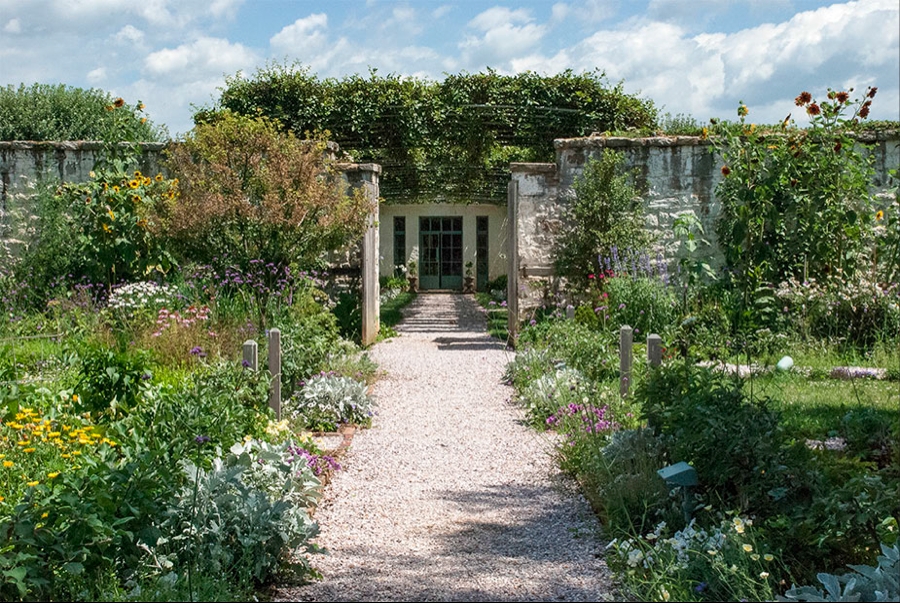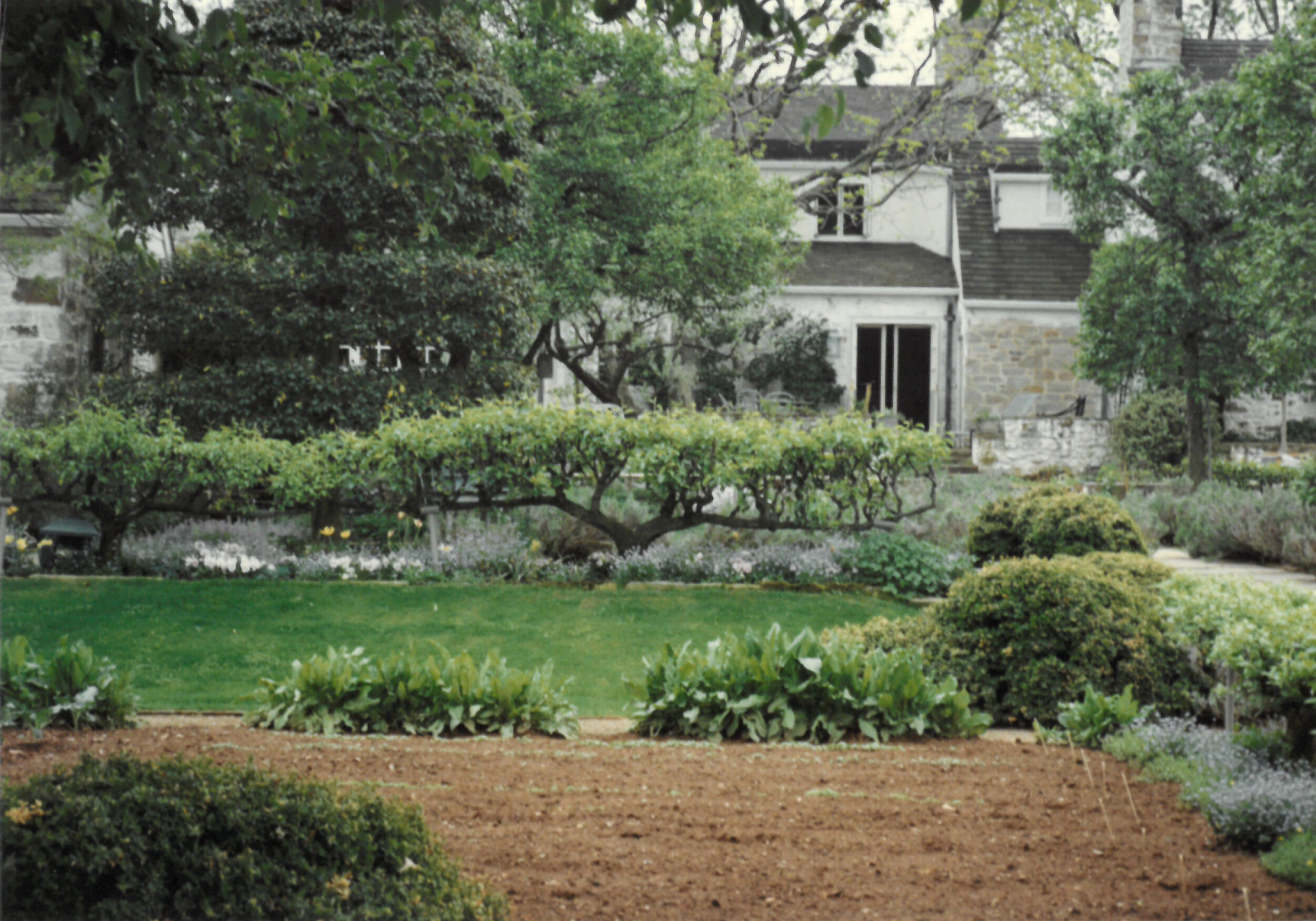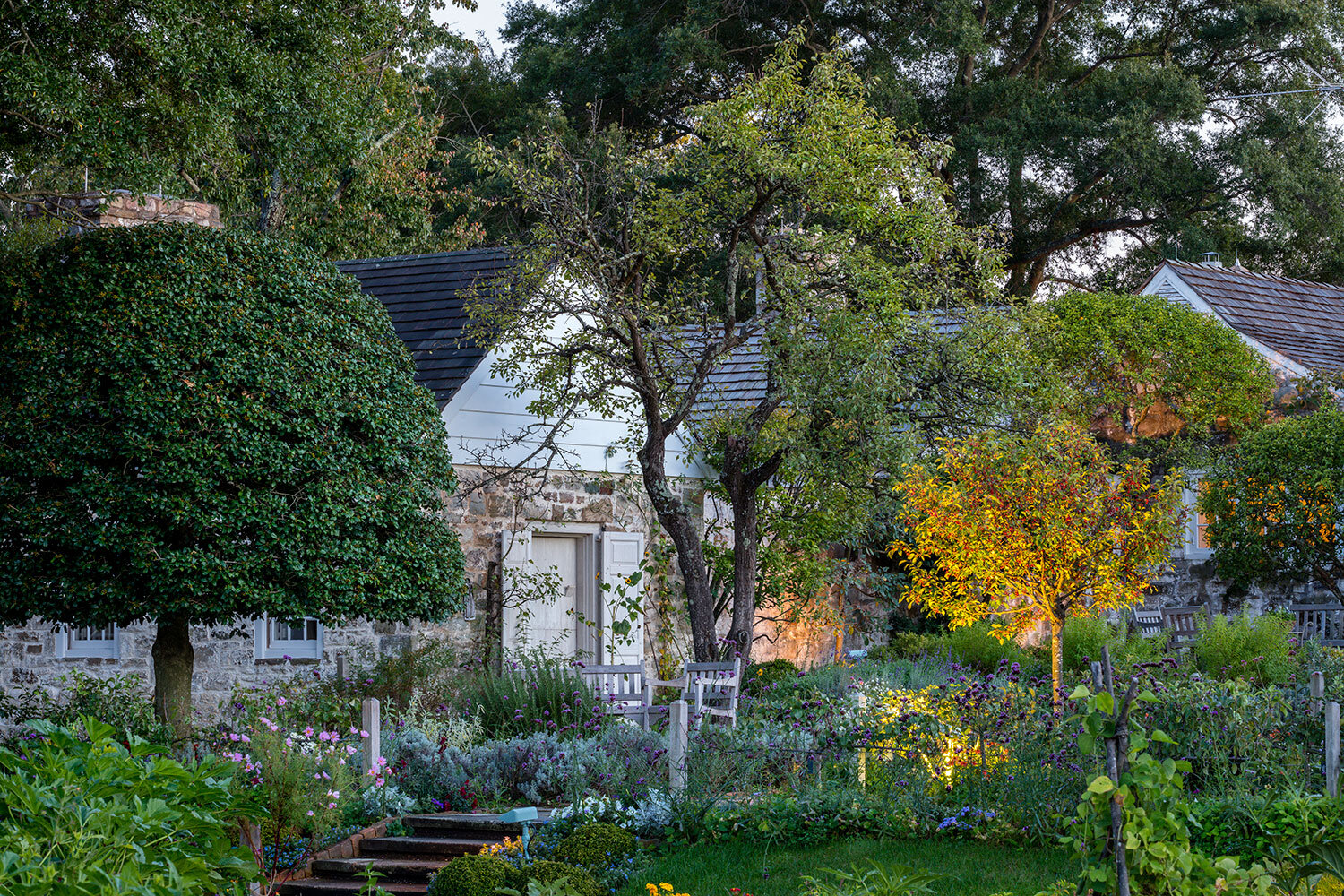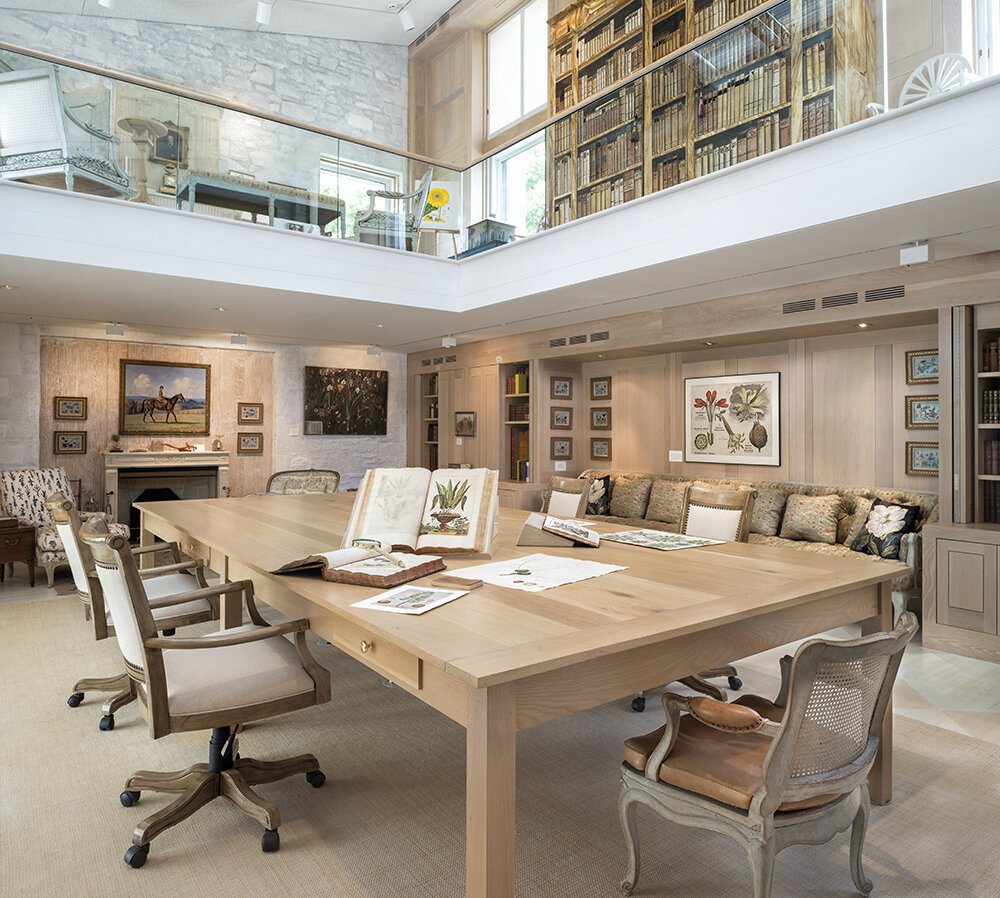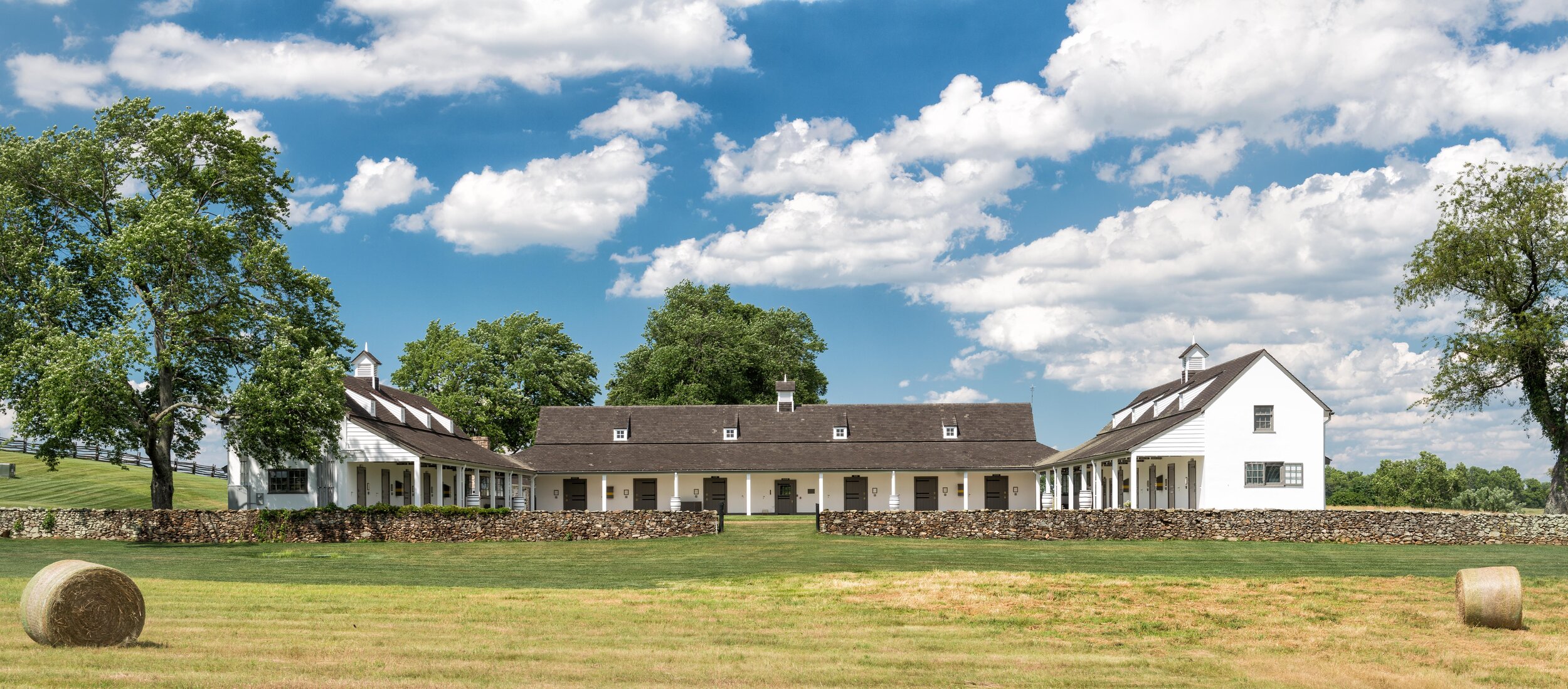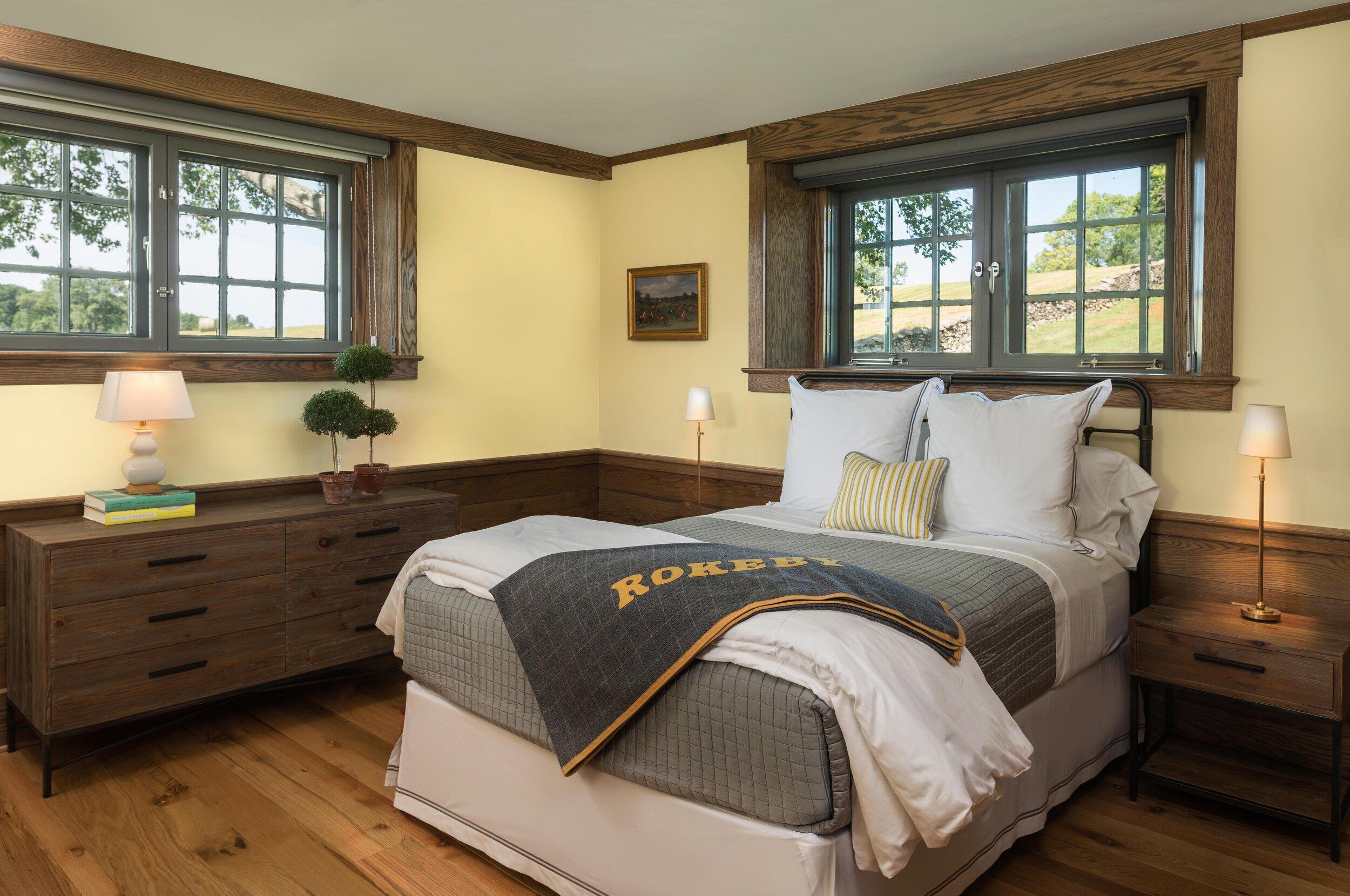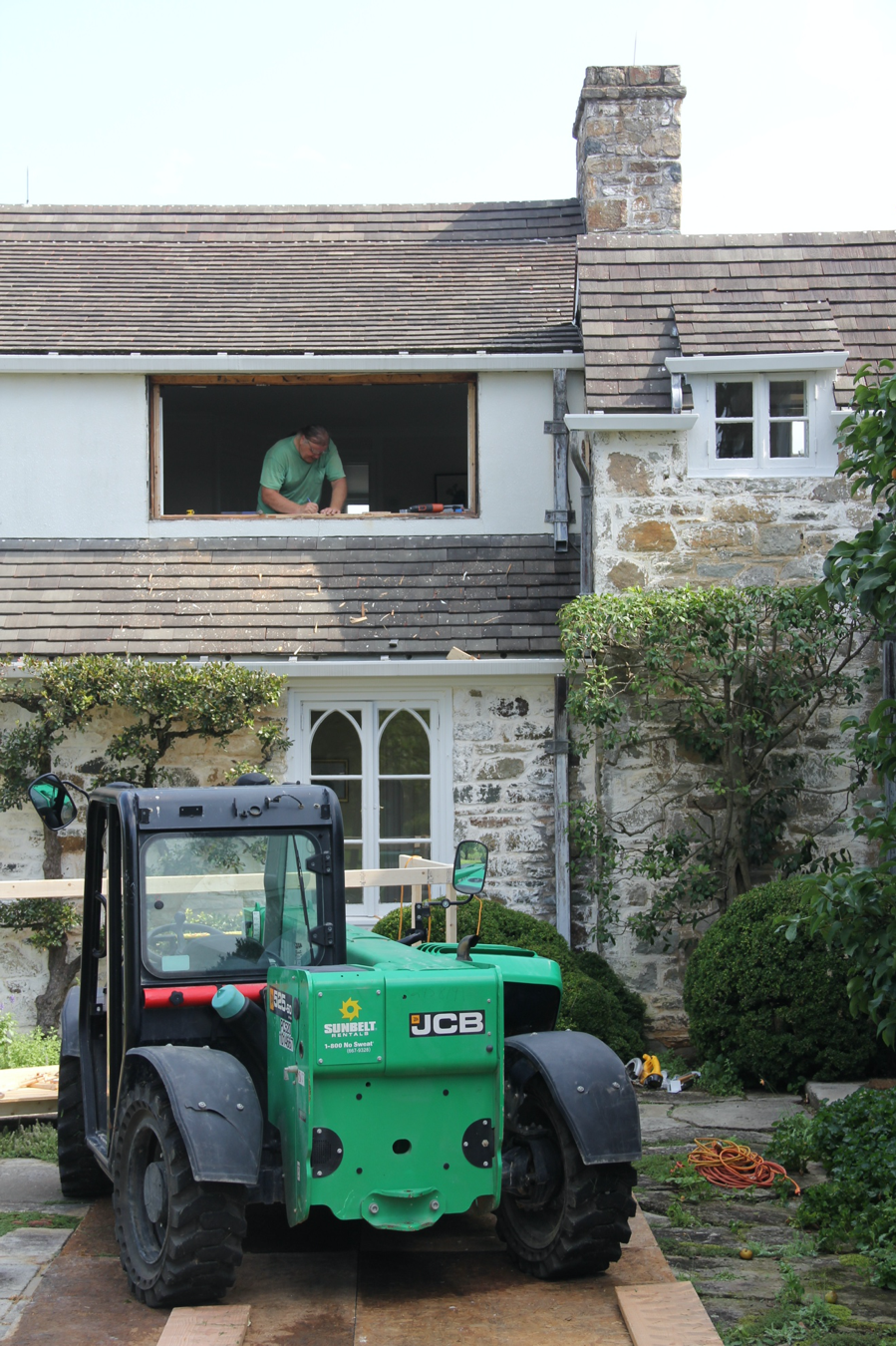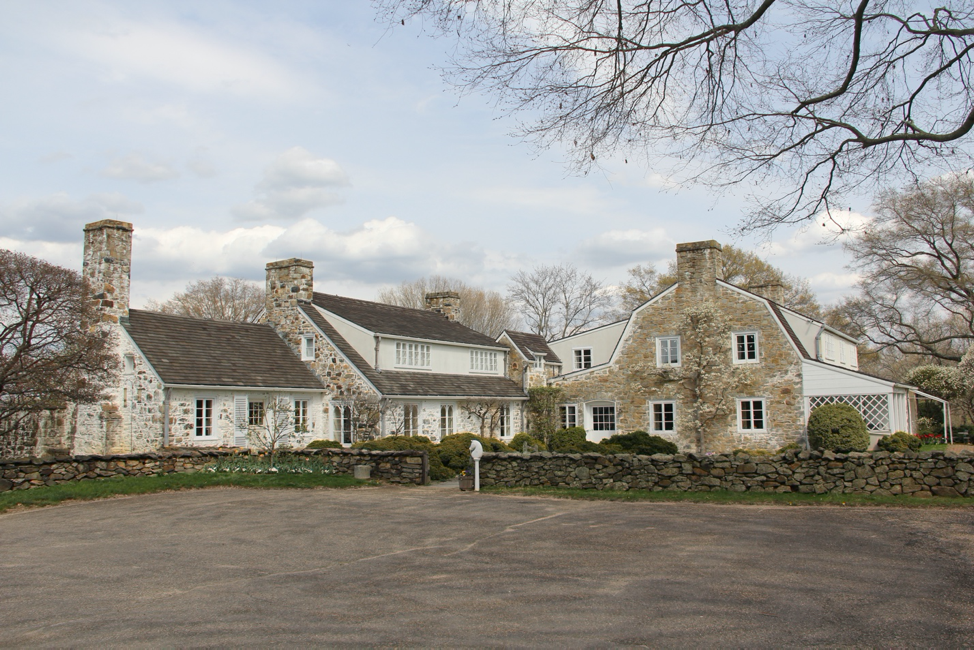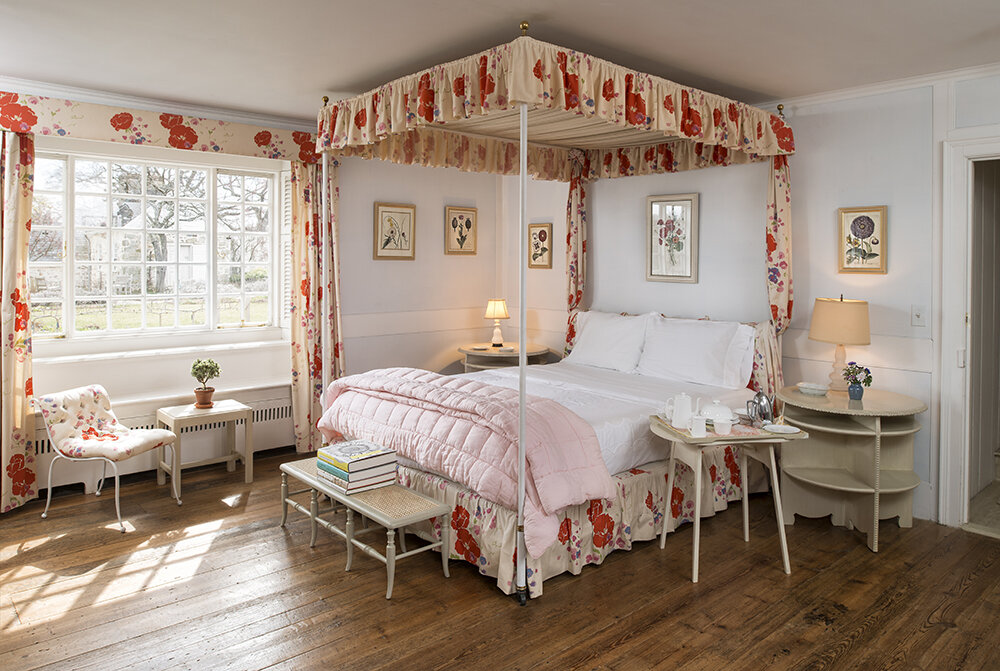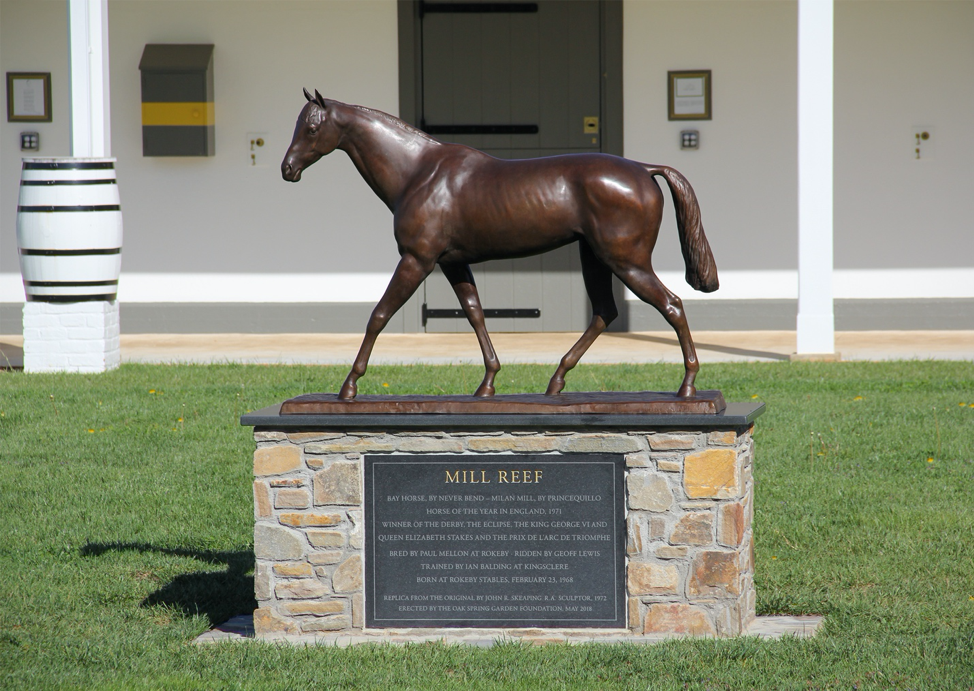
Oak Spring Garden Foundation History
Fred R. Conrad/The New York Times
Image by Fred R. Conrad/NYT
History
OSGF is an operating foundation dedicated to sharing the gifts and ideas of Rachel "Bunny" Mellon. Its mission is to support and inspire fresh thinking and bold action on the history and future of plants, including the art and culture of plants, gardens and landscapes.
Rachel Lambert “Bunny” Mellon developed a love of plants and gardens very early in her long life. At the age of ten, she began collecting botanical books. By the age of twelve she was an active gardener, inspired in part by the Olmsted Brothers, sons of Frederick Law Olmsted who managed the grounds of her father’s estate in Princeton, New Jersey. These early encounters with gardening, and also with books on gardens and landscapes, awakened Bunny Mellon’s relentless lifelong passion for plants; a passion that matured into a deep interest in the development of botanical knowledge and the principles of garden and landscape design in America and also in Europe. Through her studies she became a self-taught, but legendary, garden designer. Two of Mrs. Mellon’s iconic garden designs still grace the grounds of the White House: the recently refurbished Rose Garden and the East Garden, which was later renamed in honor of Bunny Mellon’s dear friend Jacqueline Kennedy.
Bunny’s lifelong adventure in gardening took her far afield, but she was firmly rooted in the 4,000 acre Oak Spring estate in Upperville, Virginia that she shared with her husband Paul Mellon. The library, built close to her home in 1981 as a gift from Paul Mellon, was expanded in 1997 to contain her growing collection of books, manuscripts, and art on plants, gardens, and landscapes. Mrs. Mellon’s wish was that this collection should continue to be a resource for scholars after her death and in 1993 she established the Oak Spring Garden Foundation with the purpose of maintaining and sharing those collections.
Beginnings
Fred Conrad / New York Times
When she passed away in March 2014 the direction from Mrs. Mellon’s Executors was that “Mrs. Mellon's principle purpose was to preserve her extensive collection of books, writings, maps, and designs, correspondence, sketches etc., relating to plants, flowers, fruits, vegetation, history etc.” They also noted that “The preservation of her gardens and home was never a factor in all of the planning and execution of her estate plan... the only consideration was the home of the Library as the centerpiece of her desire that her collection be made available for study, research and learning, at whatever location the Executors selected.” Mrs. Mellon's will gave her Executors complete discretion to determine where the collection should be held. Several locations away from Oak Spring were considered.
We are all fortunate that it was possible to retain Mrs. Mellon’s collections at Oak Spring and to place those collections and the Library at the center of the varied programs of the Oak Spring Garden Foundation. As far as possible we strive to maintain the special spirit and unique attributes of Mrs. Mellon’s once much larger estate, but the primary focus of the Oak Spring Garden Foundation is that Mrs. Mellon's home, garden and estate be used for public benefit in supporting programs related to plants, gardens and landscapes, and especially for programs centered around the Library and its collections.
The Transition to an Operating Foundation
After Mrs. Mellon’s death many of the treasures that were once part of Mrs. Mellon’s home were dispersed. Mrs. Mellon provided for the distribution of many items to her family, as well as to museums and galleries. Other treasures had been deeded by her husband Paul Mellon to the National Gallery of Art and other organizations. Many remaining items among the contents of Mrs. Mellon’s several homes were sold at a major sale at Sothebys in the fall of 2014. The funds raised were used to meet financial obligations after her death and also to provide funds for the Gerard B. Lambert Foundation and the Oak Spring Garden Foundation. Support for the Oak Spring Garden Foundation ensured that Mrs. Mellon’s treasured library would not be moved elsewhere and could remain at Oak Spring to be used by visiting artists and scholars residing in the refurbished Main Residence, as well as in new visitor accommodation created at the nearby Broodmare Barn.
From 2014, under the direction of Mrs. Mellon’s Executors and with the leadership of William Robertson IV, a long-time confidant of Mr. and Mrs. Mellon, restoration of the estate began to address the most urgent issues of deferred maintenance and the conversion necessary to support the public mission of the foundation, predominantly as a site for scholarly and artistic activities related to plants, gardens and landscapes. This conversion continued with the appointment of Sir Peter Crane FRS in the summer of 2016 who also began the initial development of a diverse roster of programs, including those designed to encourage the use of the library collections and make them more accessible to scholars and artists.
Respecting Mrs. Mellon’s Legacy
Horst P. Horst
Fundamental to the programs at Oak Spring Garden Foundation’s is to share the gifts and ideas of Rachel “Bunny” Mellon. Given the sale of parcels that once comprised the broader Oak Spring estate and well as the distribution and sale of most of the treasures that were once part of Mrs. Mellon’s daily life, neither Mrs. Mellon nor her executors expected OSGF to maintain the property exactly as it was during its heyday. This would also have been impossible given the practical requirements of transitioning the property from a private home into a useful facility for visiting artists and scholars. Nevertheless, as far as possible, Mrs. Mellon’s home, garden, and estate are maintained through a continuing process that seeks to honor her sensibilities and spirit. As Mrs. Mellon wrote in her gardening journal, “Gardens like many beautiful things one thinks will never change – never cease to be what they are, never die – they follow the cycle of all living things, never remaining the same. Take notes to help remind those in later years of all they possessed so that they may imagine dreams and perhaps renew part of what has been.”
The front entrance to the Main Residence was compromised by the sale of that part of the estate that once contained the main driveway. Restoring the approach to the front entrance of the Main Residence required the installation of a new road that also met local planning regulations. This has enabled vehicles to be routed away from the center of the site to recreate the pastoral landscape between the Main Residence and the Library enjoyed by Mrs. Mellon.
Other interventions in and around the Main Residence have included the conservation of important works of art and items of furniture to secure their long-term future, installation of facsimiles of the art that once hung in the Main Residence, recreation of original fabrics to restore guest rooms in the Main Residence, and creation of a facsimile of the original Mill Reef statue that once stood at the Broodmare Barn.
To further celebrate Mrs. Mellon’s sophisticated taste and accomplishments the Oak Spring Garden Foundation has also provided significant support for two books that celebrate Mrs. Mellon’s sophisticated taste and accomplishments; The Gardens of Bunny Mellon (2017) and Paul and Bunny Mellon: Visual Biographies - The Trompe l’oeil Paintings at Oak Spring, Virginia (2020). Support is also provided to support the work of several authors preparing books on diverse aspects of Mrs. Mellon’s legacy.
New Facilities & Infrastructure
In December of 2017, the Oak Spring Garden Foundation purchased the 440-acre parcel of land known as Rokeby Farm. This was the original tract of land that Andrew Mellon acquired in Fauquier County in the 1930s, immediately adjacent to the land on which the Oak Spring Garden Foundation was established. The acquisition more than doubled OSGF’s acreage and included several dozen additional buildings, many of which have now been renovated to provide accommodation for visiting artists and scholars.
In lieu of building new structures on the property, something restricted by the conservation easements thoughtfully established by Mr. and Mrs. Mellon, adaptive reuse of some existing structures has allowed the creation of facilities to meet new office, meeting, accommodation, and security needs. The Apple House, originally built to sort and store apples from orchards across the once-4,000-acre property now serves as the main modern conference space with teleconferencing capabilities.
The most historically significant buildings on the property – the Main Residence, Library, and display greenhouse – are all maintained in keeping with their original purposes to help share the special spirit created by Mrs. Mellon with participants in OSGF programs.






